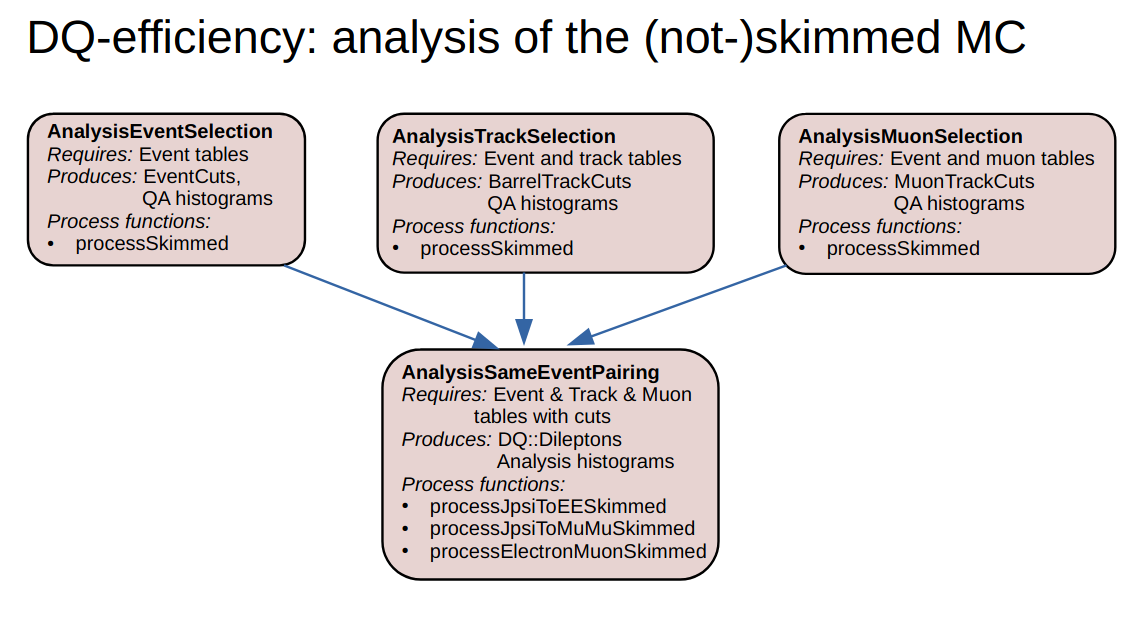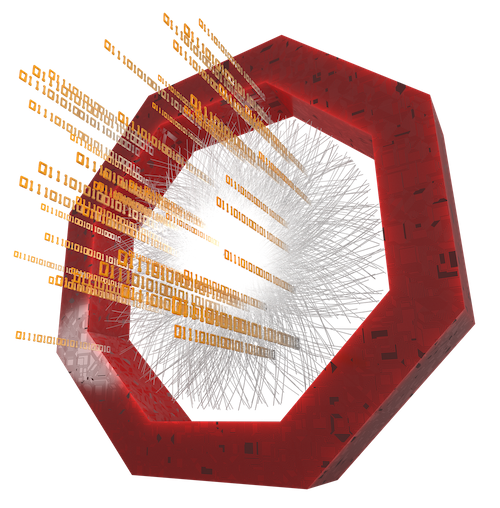Get started
In the past, some hands-on sessions have been organised within the PWG-DQ. A list of the corresponding indico events is down below:
most recent:
- O2 DQ hands-on session (7 Dec 21) indico event , ZOOM recordings of the first part of the session
- O2 DQ hands-on session (April 2022) indico event
- O2 Analysis tutorial (Oct 2022) indico event
- O2 DQ hands-on session (13 Dec 22) indico event, ZOOM recordings, DQ User Interfce
Dileptons-Quarkonia (DQ) analysis framework
Contact
Coordinators: Ionut Christian Arsene, Fiorella Fionda, Michael Andreas Winn
Mattermost channel: O2-DQ Analysis Framework Alpha
Code
- Tasks used by the dileptons-quarkonia analysis framework are in the
PWGDQdirectory. - Class to handle analysis variables are defined in
VarManager.h. - Class to define and fill histograms are defined in
HistogramManager.h. - Class to set predefined selection cuts (either AnalysisCut or AnalysisCompositeCut) are defined in
CutsLibrary.h. - Class for analysis cuts applied on the variables defined in the VarManager is defined in
AnalysisCut.hclass. - Cut class manipulating groups of cuts are defined in
AnalysisCompositeCut.hclass. - Class to store the options for a Monte-Carlo prong history based on the particle identification (PID) defined in
MCProng.hclass. - Class for define a Monte-Carlo "signal" used to match a given Monte-Carlo truth is defined in
MCSignal.hclass. - Class to handle analysis Monte Carlo Signals are defined in
MCSignalLibrary.hclass. - Mixing handler for event mixing defined in
MixingHandler.hclass. - Mixing Library for event mixing defined in
MixingLibrary.hclass. - DQ Data Model (Reduced tracks, events, muons etc.) is defined in
ReducedInfoTables.hclass. - Code for easy running of the DQ tasks and output processing can be found in the
Run3AnalysisValidation repository.
- Analysis code for postprocessing of the task output is collected in the
FirstAnalysisdirectory.
- Analysis code for postprocessing of the task output is collected in the
Existing Workflows
TableMaker.cxxCreate skimmed data tables for DQ analysis from central barrel and muon AODs. This contains a task which produces skimmed data tables with selected event information, barrel track and muon track information.TableReader.cxxAnalyze DQ skimmed data tables. This workflow runs a few tasks: event selection, barrel track selection, muon track selection, jpsi candidate creation and selection, jpsi + track combination (invariant mass, correlations, etc)filterPP.cxxProduces a decision table for pp collisions. The decisions require that at least a selected pair (or just two tracks) exists for a given event. Currently up to 64 simultaneous decisions can be made, to facilitate studies for optimizing cuts. it computes multiple event-wise decisions based on "high-level" triggers, e.g. at least one dielectron / dimuon in the eventTableMakerMC.cxxCreate skimmed data tables for DQ analysis from central barrel MC AODs (MUON tables to be added). This contains a task which produces skimmed data tables with selected reconstructed and generator level event information, and barrel track reconstructed and generated information. The generator level particles are selected using the MCSignal class (see below for details).dqEfficiency.cxxAnalysis task for processing O2::DQ MC skimmed AODs.v0selector.cxxSelect barrel tracks which belong to clean V0 and cascade topologies. This code loops over a V0Data table and produces some standard analysis output for select clean V0 sample.dileptonMuMu.cxxIt refers to The dimuon analysis task. It's a derivative of the tableReader, but with muon only informations. takes tracks flaged as « muon » and creates Pairs calculating mass, rapidity, pT.
Python Interface
To simplify the handling and usage of the O2-DQ framework a python interface has been developed and will be maintained for further user support.
Its main features are:
- run tasks with simple commands (all main workflows are included)
- dependencies are selected and set with no need to specify them in the command line
- auto completion for workflows, settings and configurables
To get started, a detailed introduction has been written and an introduction was given in the hands-on session (Dec 22).
AliHyperloop
JIRA tickets of the DQ analyses on AliHyperloop.
DQ Data Model
Simplified graph of the data model involved in a single DQ analysis is shown in the following picture.
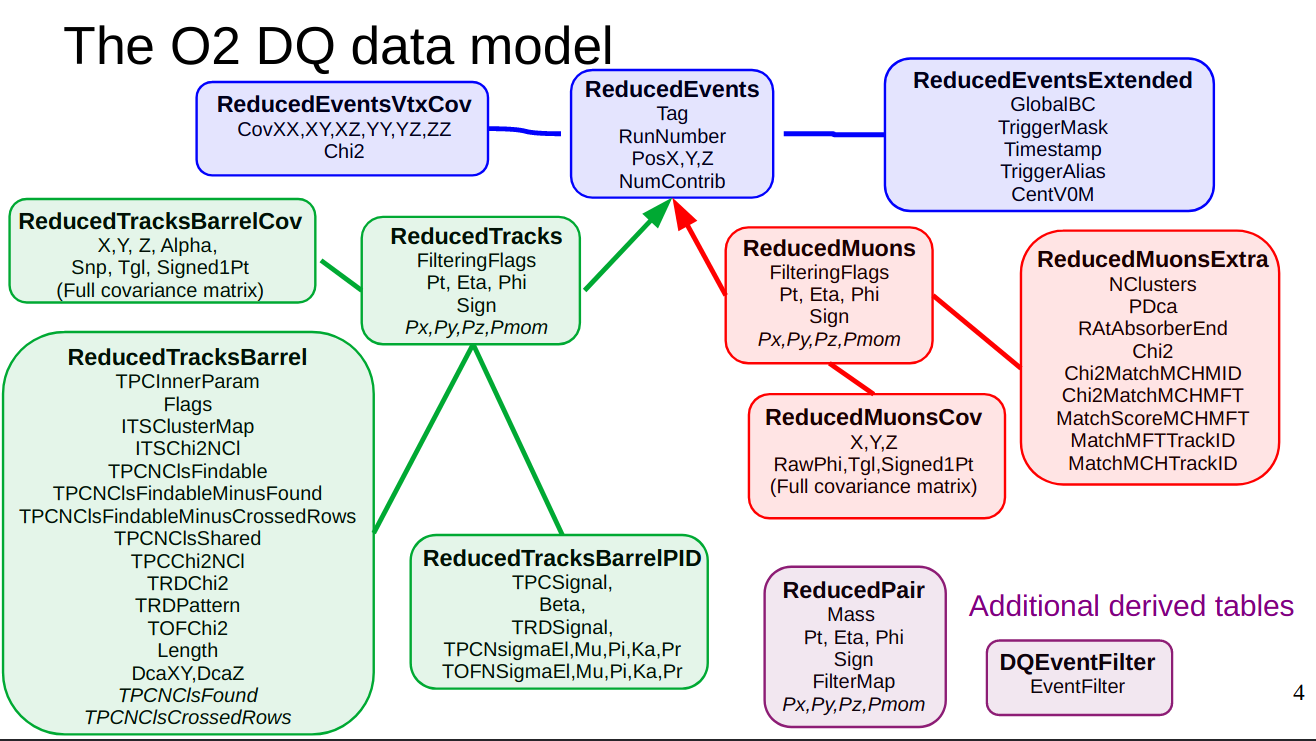
DQ Skimmed Data Model
Simplified graph of the skimmed data model involved in a single DQ analysis is shown in the following picture.
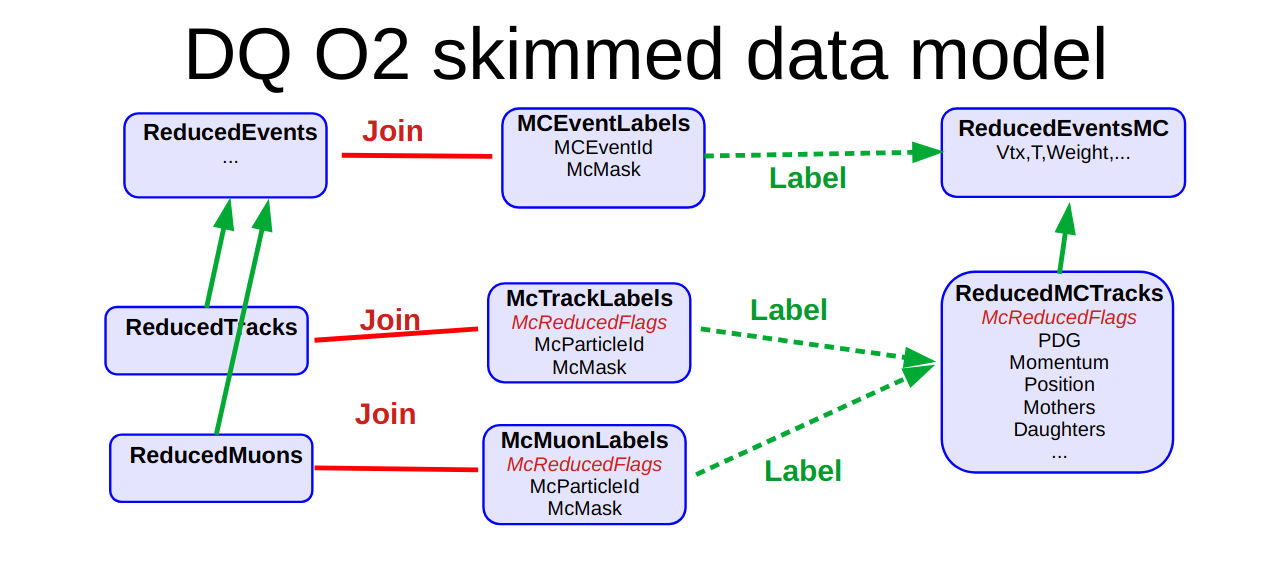
TableMaker Workflow
Simplified graph of the TableMaker workflow involved in a single DQ analysis is shown in the following picture.
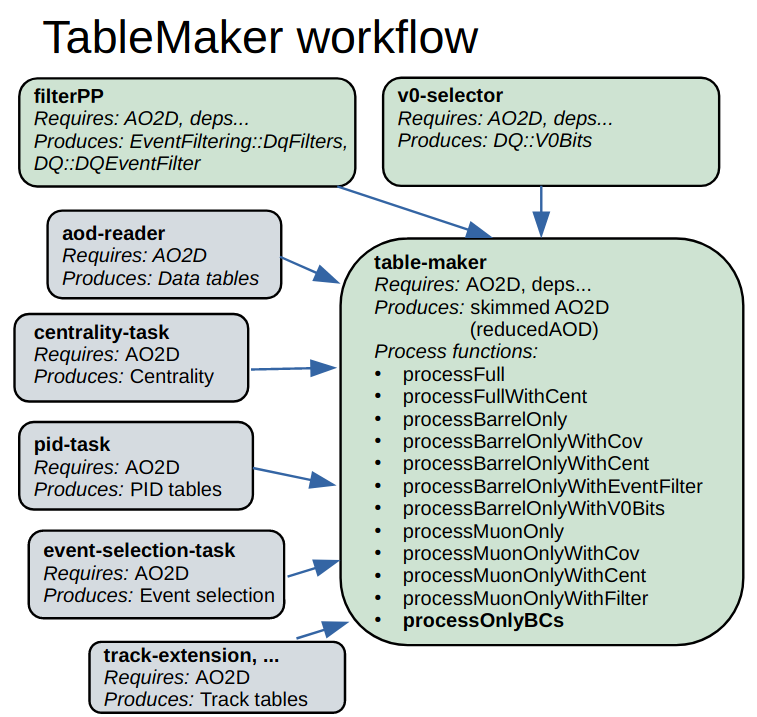
TableMakerMC Workflow
Simplified graph of the TableMakerMC workflow involved in a single DQ analysis is shown in the following picture.

TableReader Workflow
Simplified graph of the TableReader workflow involved in a single DQ analysis is shown in the following picture.

DQEfficiency WorkfFlow
Simplified graph of the DQEfficiency workflow involved in a single DQ analysis is shown in the following picture.
